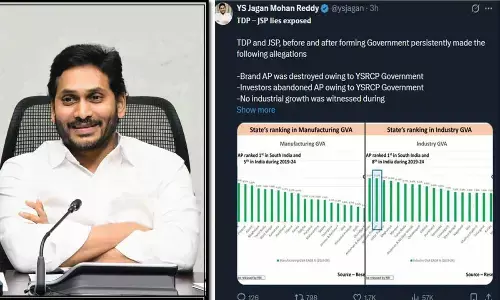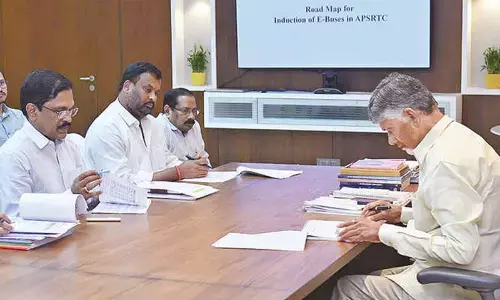Fiscal impact of stimulus 3.0 unclear

But it will be supportive for growth over the coming quarters: Fitch
New Delhi: India's third tranche of stimulus measures should support economic rebound over the coming quarters but the actual fiscal impact is difficult to ascertain, Fitch Solutions said on Monday.
The government on November 12 announced another stimulus package, called Aatmanirbhar Bharat Abhiyaan 3.0, totaling Rs 2.65 lakh crore. The package included a boost to formal employment, the Production Linked (PLI) Scheme, an increase in the fertiliser subsidy and the rural employment programme, MGNREGA. Motilal Oswal in a separate report said its calculations suggest the actual fiscal outgo in FY2021 could be a maximum of Rs 1.1 lakh crore (0.5 per cent of GDP).
This, along with the previous announcements, total fiscal package amount to Rs 17.7 lakh crore (8.7 per cent of GDP). "However, our calculations suggest the actual fiscal outgo in FY21 could be a maximum of Rs 4.7 lakh crore (2.3 per cent of GDP)," it said.
In a report, Fitch Solutions said India's fiscal deficit is likely to be 7.8 per cent of the GDP in the Fiscal Year'21 (April 2020 to March 2021). "While many of (Stimulus 3.0) scheme should be supportive to India's economic rebound over the coming quarters, the actual impact on public finances is difficult to ascertain," Fitch said.
The PLI scheme, for instance, spans across a five-year period, and their fiscal impact will likely only be seen from FY2021-22 onward, it said. "Estimating using the outright fiscal outlays from this announcement, 'Stimulus 3.0' appears to suggest additional expenditure of Rs 1 lakh crore (0.44 per cent of FY2019/20 GDP)," it said.
Moreover, the announcement did not outline any additional borrowing to finance these additional spending, which suggests a reallocation of FY2020/21 budget expenditure plans instead, Fitch added. Exactly a month after the 'Aatmanirbhar Bharat Abhiyaan 2.0' package – which included announcements regarding consumption and investment – was announced on October 12, the central government came out with its third round of stimulus package.
Stimulus 3.0 package included Rs 1.6 lakh crore toward the PLI Scheme and the remaining Rs 1.2 lakh crore toward the other 11 announcements such as the extension of the Emergency Credit Line Guarantee Scheme (ECLGS 1.0) up to March 31, 2021, the launch of ECLGS 2.0 for the 26 stressed sectors, income tax relief for developers and home buyers, and budget outlay for R&D toward the Covid-19 vaccine.
Additionally, the central government also increased the budget outlay for urban housing (under the Pradhan Mantri Awas Yojana – PMAY), fertilizer subsidy, and Mahatma Gandhi National Rural Employment Guarantee Act. Of this Rs 1.2 lakh crore, 54.6 per cent or Rs 65,000 crore is additional allocation toward fertilizer subsidy, which takes the total FY21 allocation to Rs 1.4 lakh crore, Motilal Oswal said.
"This is surprising as actual data suggests spending of only Rs 55,400 crore in 1HFY21, implying the government intends to spend Rs 80,900 crore more in 2HFY21. Thereby, expect massive growth of 220 per cent year-on-year in 2HFY21 over the subsidy provided in 2HFY20." The brokerage said Stimulus 3.0 along with the Pradhan Mantri Garib Kalyan Package (PMGKP), the first two packages under the 'Aatmanirbhar Bharat Abhiyaan', and extension of the PMGKP amount to a total estimated fiscal stimulus of Rs 17.7 lakh crore (8.7 per cent of GDP).
"However, our calculations suggest the actual fiscal outgo from these packages could be up to a maximum of Rs 4.7 lakh crore (2.3 per cent of GDP)," it said. Of the remaining Rs 54,100 crore of Stimulus 3.0, Rs 10,200 crore has been set aside for additional capital spending by the central government this year.
"This too comes as a surprise. Capital expenditure incurred by the central government in 1HFY21 was 11.6 per cent year-on-year lower at Rs 1.7 lakh crore and only 40.2 per cent of FY21 Budget Estimate (an eight-year low).
"Therefore, additional Rs 25,000 crore announced in 'Aatmanirbhar Bharat Abhiyaan 2.0' and Rs 10,200 crore (in Stimulus 3.0) takes the total capital expenditure target to Rs 4.5 lakh crore, indicating the government's intention to spend another Rs 2.8 lakh crore in 2HFY21. If so, the growth in capex expected in 2HFY21 alone would be 88.6 per cent YoY," Motilal Oswal said.
It said the announcements of an additional Rs 10,000 crore toward MGNREGA, EPFO subsidy support worth Rs 6,000 crore toward new hiring (fresh hires and those who lost their jobs between March 1 2020 to September 30, 2020), and additional Rs 18,000 crore toward PMAY-Urban are all welcome moves.
The magnitude of each of these announcements, however, still seems disappointing, it said. Also, there were certain announcements such as Rs 900 crore toward R&D for the Covid-19 vaccine and Rs 6,000 crore toward government equity investment in the National Infrastructure Investment Fund (NIIF).




















